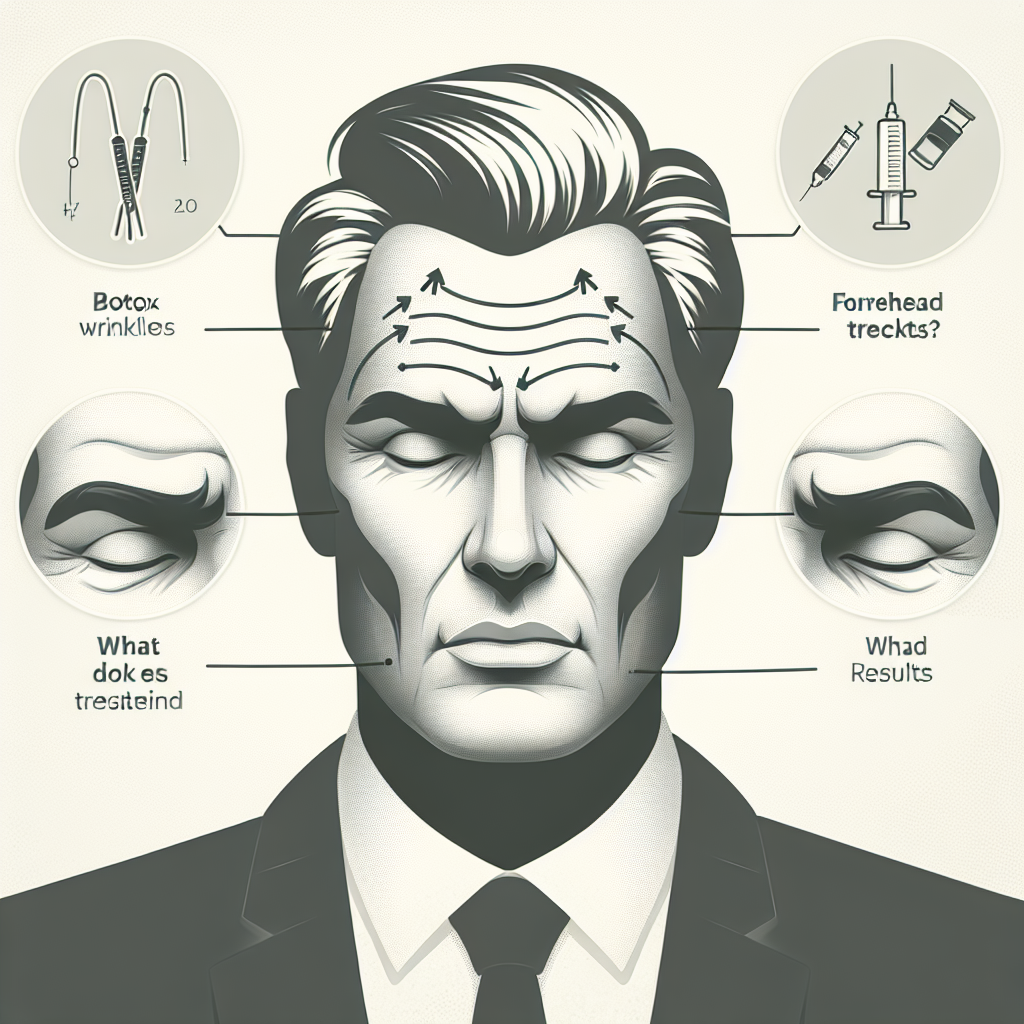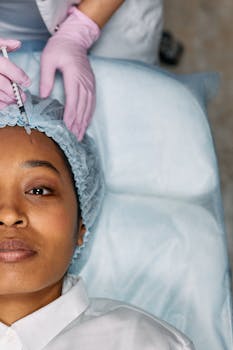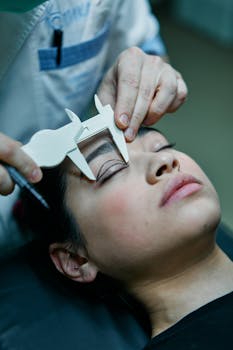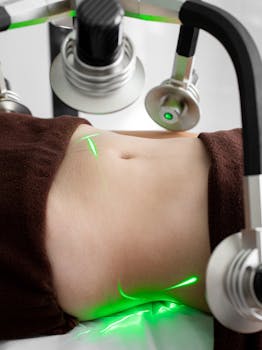Forehead lines are one of the most common cosmetic concerns treated in dermatology and aesthetic medicine. If you’ve been wondering how does botox work on forehead wrinkles, this article explains the science behind the treatment, what forehead areas respond best, typical dosing approaches, and what results you can expect. We’ll also compare Botox to other wrinkle relaxing injections and outline recovery and aftercare considerations.
How Botox works on the forehead
Botox (onabotulinumtoxinA) is a neuromodulator that temporarily blocks signals from nerves to targeted facial muscles. When small doses are injected into the forehead, the treated muscles relax and can no longer contract as strongly. Reduced muscle activity smooths dynamic lines—those that appear with facial expression—such as horizontal forehead wrinkles and the lines that form when raising the eyebrows.
Which forehead lines respond best?
Not all wrinkles are the same. Botox injections forehead lines typically treat:
- Horizontal forehead lines caused by repetitive eyebrow elevation.
- Glabellar lines (frown lines) between the eyebrows that form with furrowing.
- Some crow’s feet that extend from the outer eye when combined with lateral forehead treatments.
Static lines (wrinkles present at rest) may improve but often require complementary treatments such as fillers, laser resurfacing, or skin remodeling techniques for optimal smoothing.
Mechanism and safety considerations
At the injection site, botulinum toxin prevents the release of acetylcholine at the neuromuscular junction. The result is temporary muscle weakening; the effect generally begins within 2–5 days and reaches peak effect by 2 weeks. Because the paralysis is localized and reversible, wrinkle relaxing injections are considered low-risk when administered by licensed clinicians who understand forehead anatomy and dosing.
Dosing and treatment patterns
Doses vary by patient based on muscle strength, sex, age, and desired outcome. Practitioners often use a conservative approach for first-time treatments and adjust at follow-up:
- Smaller units in the central forehead to avoid brow ptosis (heavy brows).
- Higher or more distributed units in patients with strong frontalis activity.
- Combination treatments—targeting glabella plus forehead—are common to balance brow position and expression.
Discuss aesthetic goals and any history of neuromuscular conditions with your provider. Individualized dosing helps minimize side effects such as asymmetry, eyebrow droop, or unwanted changes in expression.
What to expect after treatment
Most people experience minimal downtime. Common post-treatment notes include mild redness, tiny injection-site bumps that resolve, and occasional bruising. You can often return to normal activities the same day, though clinicians recommend avoiding vigorous exercise and rubbing the area for 24 hours to reduce diffusion risk.
For a perspective on recovery expectations after other facial procedures, such as surgical rhinoplasty, see this rhinoplasty recovery timeline — what to expect after nose surgery, which helps contrast surgical downtime with the much shorter recovery for injections.
Timeline of results
- Onset: 2–5 days.
- Peak effect: around 2 weeks.
- Duration: typically 3–4 months for most people; repeated treatments may prolong response.
Maintenance treatments are usually scheduled every 3–4 months, though some patients choose longer intervals depending on muscle reconditioning and personal preference.
Comparing Botox to other options
Botox and other neuromodulators are ideal for dynamic wrinkles. Alternatives or complements include dermal fillers for volume loss, chemical peels and lasers for skin texture and fine lines, and topical retinoids for gradual collagen remodeling. When exploring options, ask about combined plans that use multiple modalities for a more comprehensive facial rejuvenation.
Science-backed safety information
For an authoritative overview of benefits and risks associated with botulinum toxin treatments, see this detailed review from Harvard Health Publishing: botox facts and safety considerations.
Quick takeaways
- Botox reduces forehead wrinkles by relaxing the muscles that cause dynamic lines.
- Results appear within days and last a few months; individualized dosing optimizes safety and appearance.
- Complementary treatments may be needed for static lines and skin quality.
Frequently asked questions
Q: Will Botox make my forehead look frozen?
A: When injected conservatively and strategically, wrinkle relaxing injections aim to soften movement while preserving natural expression. Experienced injectors tailor dosing and sites to avoid a “frozen” look.
Q: How soon can I expect to see improvement?
A: Many people notice subtle changes within 2–5 days, with full effect by about two weeks.
Q: Is repeated treatment necessary?
A: Yes—effects are temporary. Most patients return every 3–4 months, though frequency can be adjusted based on results and goals.






